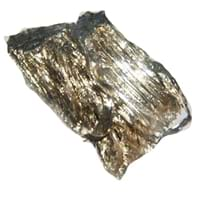Samarium Osmium Comparison
Periodic Table
Symbol
Sm
Os
Group Number
Not Available
8
10
Period Number
6
6
Block
f block
d block
Element Family
Lanthanide
Transition Metal
CAS Number
7440199
99+
7440042
99+
Space Group Name
R_ 3m
P63/mmc
Space Group Number
166.00
6
194.00
5
Facts
Interesting Facts
- Samarium metals helps stimulating body metabolism.
- Samarium metals was 1st observed by Jean Charles Galissard de Marignac in Dydimia in 1853.
- Osmium metal does not oxidize in air unless it is heated.
- But if it heated den it forms Osmium Tetroxide, which is highly toxic.
Sources
Found in Minerals, Mining, Ores of Minerals
Found As a By-product, Found in Minerals, Mining
History
Who Discovered
Lecoq de Boisbaudran
Smithson Tennant
Discovery
In 1879
In 1803
Abundance
Abundance In Universe
5 * 10-7 %
19
3 * 10-7 %
21
Abundance In Sun
~0.0000001 %
26
~0.0000002 %
25
Abundance In Meteorites
0.00 %
37
0.00 %
28
Abundance In Earth's Crust
0.00 %
29
0.00 %
99+
Abundance In Oceans
0.00 %
40
Not Available
Uses
Uses & Benefits
- Magnets of Samarium cobalt alloy are stronger than that of Iron and hence, they are used in microwave application.
- Samarium metal also used in optical lasers and infrared absorbing glasses and as a neutron absorber.
- Its has very limited uses and its alloys are very hard and are used in the manufacturing of pen tips, pivots, needles and electrical contacts.
- It is also used as industrial catalyst to speed up the chemical reaction.
Industrial Uses
Aerospace Industry, Automobile Industry, Chemical Industry, Electrical Industry, Electronic Industry
Aerospace Industry, Automobile Industry, Electrical Industry, Electronic Industry
Medical Uses
NA
NA
Other Uses
Alloys, In Nuclear Reactors
Alloys
Biological Properties
Toxicity
Slightly Toxic
Highly Toxic
Present in Human Body
Yes
No
In Blood
0.01 Blood/mg dm-3
22
Not Available
Physical Properties
Melting Point
1,072.00 °C
99+
3,045.00 °C
3
Boiling Point
1,900.00 °C
99+
5,027.00 °C
6
Appearance
Physical State
Solid
Solid
Color
Silvery White
Silvery Bluish-Gray
Luster
Lustrous
Metallic
Hardness
Mohs Hardness
Not Available
7.00
3
Brinell Hardness
441.00 MPa
27
3,490.00 MPa
1
Vickers Hardness
412.00 MPa
24
Not Available
Speed of Sound
2,130.00 m/s
99+
4,940.00 m/s
11
Optical Properties
Allotropes
No
No
α Allotropes
Not Available
Not Available
β Allotropes
Not Available
Not Available
γ Allotropes
Not Available
Not Available
Chemical Properties
Chemical Formula
Sm
Os
Isotopes
Known Isotopes
30
9
35
4
Electronegativity
Pauling Electronegativity
1.17
40
2.20
4
Allred Rochow Electronegativity
1.07
32
1.52
12
Allen Electronegativity
Not Available
1.65
19
Electropositivity
Pauling Electropositivity
2.83
14
1.80
99+
Ionization Energies
1st Energy Level
544.50 kJ/mol
99+
840.00 kJ/mol
12
2nd Energy Level
1,070.00 kJ/mol
99+
1,309.80 kJ/mol
99+
3rd Energy Level
2,260.00 kJ/mol
99+
1,600.00 kJ/mol
99+
4th Energy Level
3,990.00 kJ/mol
37
Not Available
Electrochemical Equivalent
1.87 g/amp-hr
34
1.77 g/amp-hr
38
Electron Work Function
2.70 eV
99+
4.83 eV
8
Other Chemical Properties
Ionization, Radioactive Isotopes
Chemical Stability, Ionization, Solubility
Atomic Properties
Atomic Number
62
99+
76
40
Electron Configuration
[Xe] 4f6 6s2
[Xe] 4f14 5d6 6s2
Crystal Structure
Rhombohedral (RHO)
Hexagonal Close Packed (HCP)
Crystal Lattice
RHO-Crystal-Structure-of-Samarium.jpg#100
BCC-Crystal-Structure-.jpg#100
Atom
Number of Protons
62
99+
76
39
Number of Neutrons
88
39
114
25
Number of Electrons
62
99+
76
39
Radius of an Atom
Atomic Radius
180.00 pm
14
133.80 pm
99+
Covalent Radius
198.00 pm
13
Not Available
Van der Waals Radius
229.00 pm
20
216.00 pm
24
Atomic Weight
150.36 amu
99+
190.23 amu
35
Atomic Volume
19.95 cm3/mol
19
8.49 cm3/mol
99+
Adjacent Atomic Numbers
Valence Electron Potential
44.80 (-eV)
37
91.40 (-eV)
12
Lattice Constant
362.10 pm
33
273.44 pm
99+
Lattice Angles
π/2, π/2, 2 π/3
π/2, π/2, 2 π/3
Lattice C/A Ratio
Not Available
1.58
14
Mechanical Properties
Density
Density At Room Temperature
7.52 g/cm3
99+
22.59 g/cm3
9
Density When Liquid (at m.p.)
7.16 g/cm3
32
20.00 g/cm3
1
Tensile Strength
Not Available
1,000.00 MPa
4
Viscosity
Not Available
Not Available
Vapor Pressure
Vapor Pressure at 1000 K
0.94 (Pa)
9
Not Available
Vapor Pressure at 2000 K
Not Available
0.00 (Pa)
28
Elasticity properties
Shear Modulus
19.50 GPa
34
222.00 GPa
1
Bulk Modulus
37.80 GPa
35
462.00 GPa
1
Young's Modulus
49.70 GPa
37
Not Available
Poisson Ratio
0.27
19
0.25
24
Other Mechanical Properties
NA
Ductile
Magnetic Properties
Magnetic Characteristics
Specific Gravity
7.52
99+
22.57
2
Magnetic Ordering
Paramagnetic
Paramagnetic
Electrical Properties
Electrical Property
Conductor
Conductor
Resistivity
0.94 nΩ·m
99+
81.20 nΩ·m
35
Electrical Conductivity
0.01 106/cm Ω
99+
0.11 106/cm Ω
18
Electron Affinity
50.00 kJ/mol
21
106.10 kJ/mol
9
Thermal Properties
Specific Heat
0.20 J/(kg K)
31
0.13 J/(kg K)
39
Molar Heat Capacity
29.54 J/mol·K
7
24.70 J/mol·K
99+
Thermal Conductivity
13.30 W/m·K
99+
87.60 W/m·K
19
Critical Temperature
Not Available
Not Available
Thermal Expansion
12.70 µm/(m·K)
30
5.10 µm/(m·K)
99+
Enthalpy
Enthalpy of Vaporization
166.40 kJ/mol
99+
627.60 kJ/mol
7
Enthalpy of Fusion
8.62 kJ/mol
40
29.30 kJ/mol
4
Enthalpy of Atomization
209.00 kJ/mol
99+
669.00 kJ/mol
6
Standard Molar Entropy
69.60 J/mol.K
15
32.60 J/mol.K
99+
|
||
|
||
|












